Post Event Report
Driving Semiconductor Innovation for AI
Date: 23 May 2024, Thursday
Time: 8.30 am to 3.30 pm
Venue: NUS, CDE Block EA, Lecture Theatre 7A , 9 Engineering Drive 1, Singapore 117575
Led by Marvell, the joint event on Driving Semiconductor Innovation for AI by Marvell, NUS College of Design and Engineering and SHINE on 23 May 2024 was a resounding success, with about 350 attendees from diverse fields in engineering, computing, science and research across academia, research institutes and industry. Held at Block EA of the NUS College of Design and Engineering campus, the event featured a series of insightful sessions, engaging semiconductor ecosystem exhibition and memorable moments that left a lasting impact on all participants.
The event kicked off with a warm welcome from Dr. Radha Nagarajan, SVP and CTO of Marvell, setting the tone for the day, and preparing the audience of the exciting journey ahead on the development of integrated Circuit from Concept to Product at the exhibition floor.
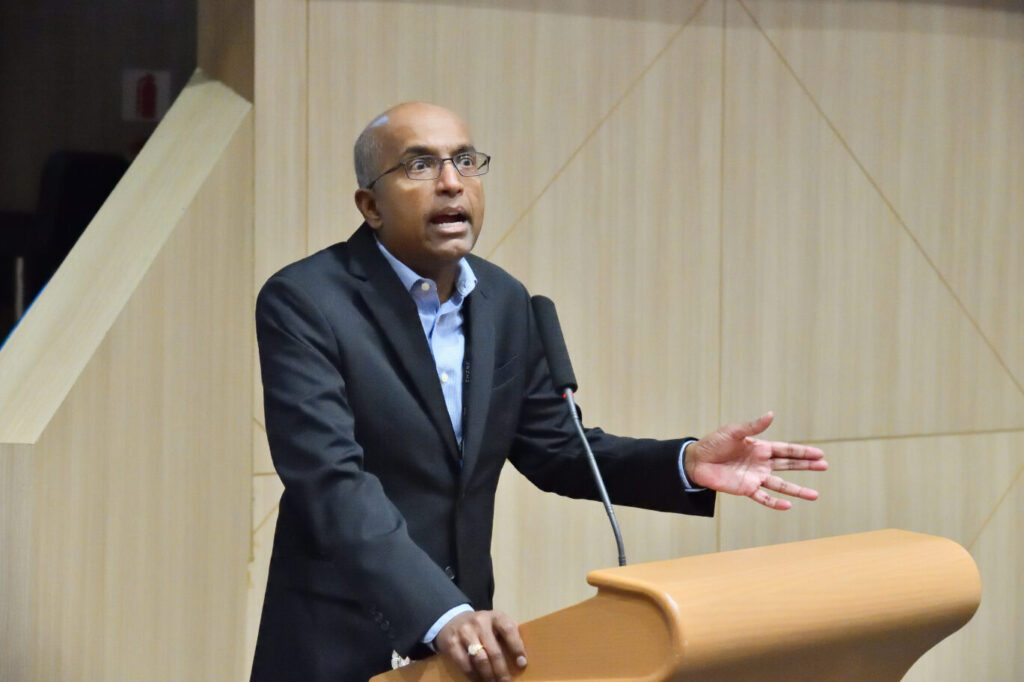
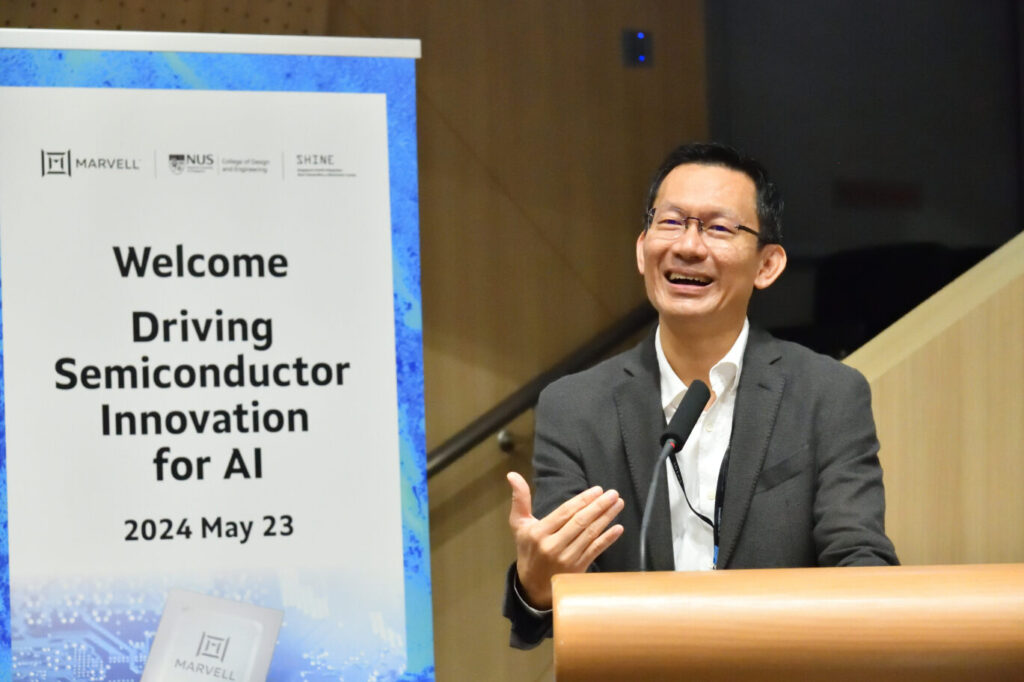
The opening keynote by Mr Beh Kian Teck, CEO of NRF provided a glimpse of Singapore’s role in building a nation of entrepreneurs and innovators in semiconductor and AI. Singapore had moved from a nation of technician 40 years ago to a nation of entrepreneurs and innovators. To that note, we could find many parts in the gadgets that we own are manufactured in Singapore. Mr Beh indicated 3 pillars of innovation ecosystem that would move us one step closer to a nation of innovators and entrepreneurs. The first being the Science Base pillar which is fundamental to the growth of society where research is driven by curiosity. The second pillar being the Translation Engine under which the National Semiconductor Translation Centre serves to remove the high barrier of entry to start-up. The third pillar is to Build the Deep Tech Venture by bringing in ecosystem companies along with Deep Tech venture capital to co-invest in promising startup.
Mr Beh applauded the joint event by Marvell and NUS which helped to bring the community together. He said NRF is looking forward to Marvell, NUS and the larger group of people could continue to come together and organise the next integrated community event. He believes when the ecosystem lends their energy together, the community events become more integrated and is a lot more sustainable to engage the next generation of young people to the sector. In conclusion, Mr Beh said the promise of AI could only be sustainably realized if we succeed in pushing the boundaries of semiconductor innovation and Singapore hopes to contribute to this front by pushing the above mentioned 3 pillars of innovation ecosystem. He hopes today’s event is just the start to spark off the opportunity for partnership and collaboration.

The second keynote topic on Optical Interconnects for the AI Era by Dr Loi Nguyen revealed that Interconnects is a key enabling technology since the dawn of computing. The rapid growth of AI sees the need for optical interconnects enabling large AI Clusters. Dr Loi unveiled Silicone Photonics module for optical connects which convert electricity to light and vice versa. He was excited to share that majority of the chips optical interconnect are made by Marvell and Singapore is Marvell’s 3rd largest site outside of the US. He said this is the great times for semiconductor optics and engineers as they will be highly sought after. He announced the Marvell 6-month internship programme and invites NUS’ students to apply for the internship with the potential of them becoming a big family of Marvell when they graduated.
Prof Aaron Thean, Director of SHINE and Provost of NUS, delivered an insightful keynote on the topic of Heterogeneous Integration and the New Opportunities for Novel Material-System Co-Design. Prof. Thean stressed that semiconductors are the cornerstone of the AI-driven future. The development of more powerful machines relies heavily on advancements in semiconductor technology and discussed the recent and new trends of scaling evolution. He illustrated the progression of transistor scaling, showing a shift from geometric scaling to more complex, vertically stacked transistor configurations in modern 3D IC systems. He also noted a shift of the packaging technology from back-end to the front-end by packaging he chips and wire them together. He emphasized the necessity of integrating new materials, devices, and architectures to drive the innovation of heterogeneous 2.5D and 3D integrated circuits (ICs), and exciting new STCO (System Technology Co-Optimization) and DTCO (Design Technology Co-Optimization) are needed in achieving these innovations.
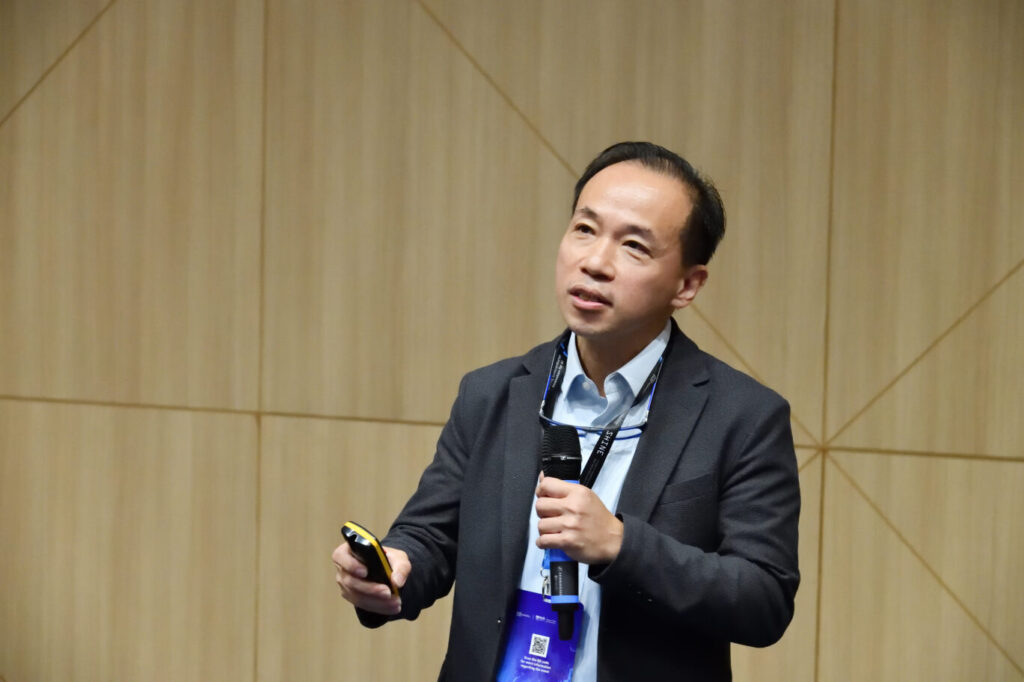
Prof. Thean moved on to introduce state of the art packaging facility at SHINE centre that bring together front-end online material innovation with advanced packaging capability. He said the centre allows students to have access to these huge tools to perform wafer level projects leveraging on advanced soldering capability, low temperature soldering and advanced die wafer. He emphasized that passion is needed for the research field and that the path forward to solving the problems of computing will not rely on a single process or approach. Instead, it must be a co-optimization of multiple technologies and strategies.
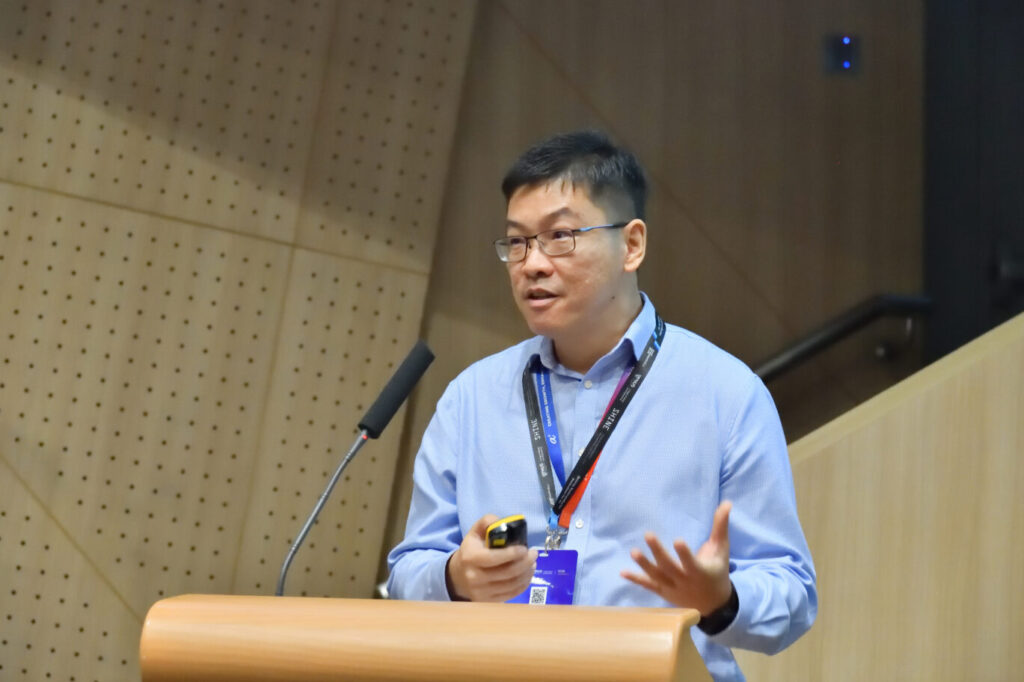
The last keynote speaker was Dr Terence Gan who delivered the topic on Enabling Research and Heterogeneous Integration in Singapore. Dr Terence Gan started off by thanking NRF for enabling A*Star IME with 8000 square meters of semiconductor cleanroom. He then walked the audience through the 10-year key milestone of Advanced Packaging Innovations at IME. He stated advanced packaging, as described, is heterogeneous, offering multiple integration possibilities beyond traditional methods. This includes options like CoWAS, high-density RDL with nano-packaging, and hybrid interposers combining photonics and electronics. A*Star IME positions itself as a one-stop-shop for tailored solutions, collaborating with partners including SHINE Centre to address diverse system requirements and offering translational research to facilitate industry grade low volume production. He concluded the talk by introducing the key team members, inviting engagement to turn ideas into reality through partnerships with SHINE, academia and industry scientists.
Panel Discussion:
Moderated by Dr Radha Nagarajan, a lively panel discussion on Driving Innovation in Heterogeneous Integration in AI featuring 6 panellists who shared their diverse perspectives sparked a thought-provoking conversation that resonated with the audience.
The panellists comprise Dr Arvind Sundarrajan, Managing Director, Applied Packaging Development Center and Singapore Semiconductor Products Group of Applied Materials; Dr Soh Yun Siah, VP, Technology Development of Singapore GlobalFoundries; Dr. Patrick Lo Guo-Qiang, CTO of Advanced Micro Foundry; Dr Alfred Yeo Swain Hong, Director, Research and Development of StatsChipPAC; Dr Chen Lan, Director, Product Development of AMD; and Dr Noam Mizrahi, EVP, Corporate Chief Technology Officer of Marvell.
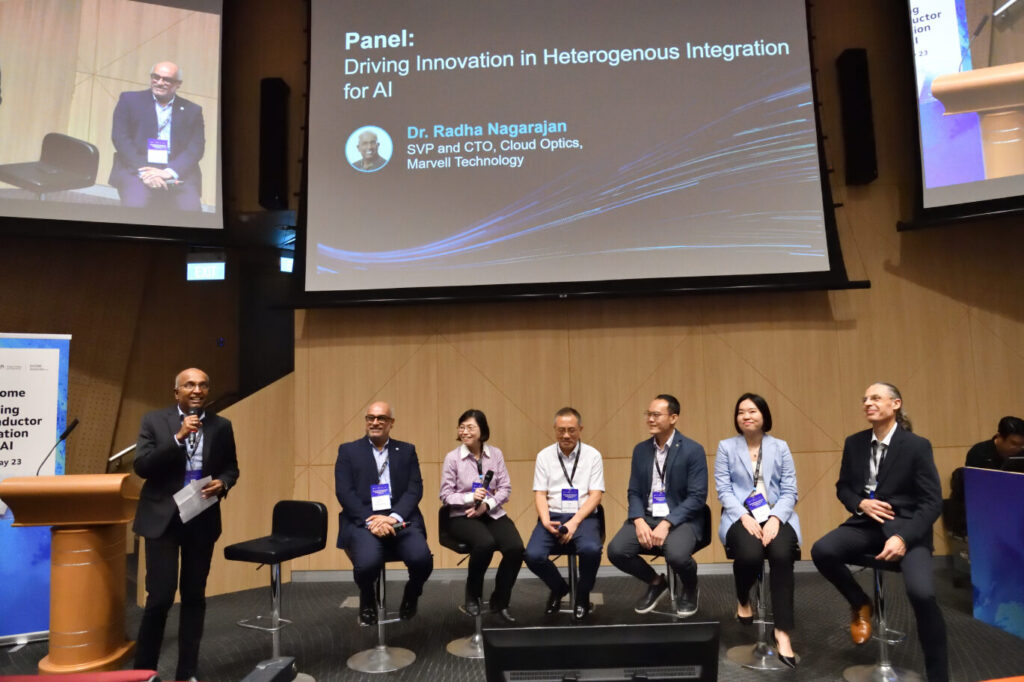

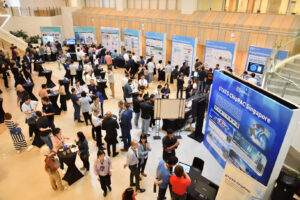
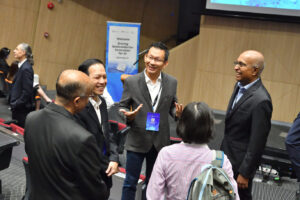
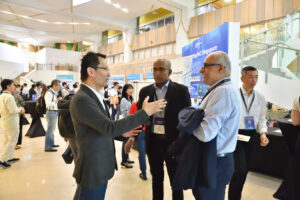
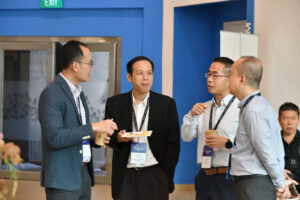
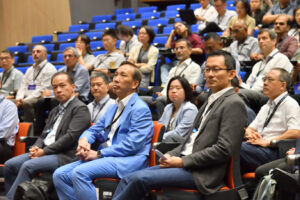
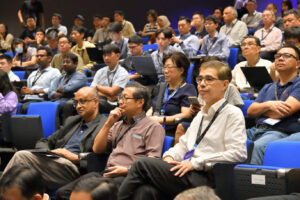
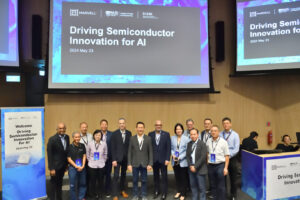

- Home
- Driving Semiconductor Innovation for AI
Singapore Hybrid-Integrated Next-Generation μ-Electronics (SHINE) Centre
- Block E6, #E6-5-3, 5 Engineering Drive 1, Singapore 117608
- +65 6601 8522
- shine@nus.edu.sg

